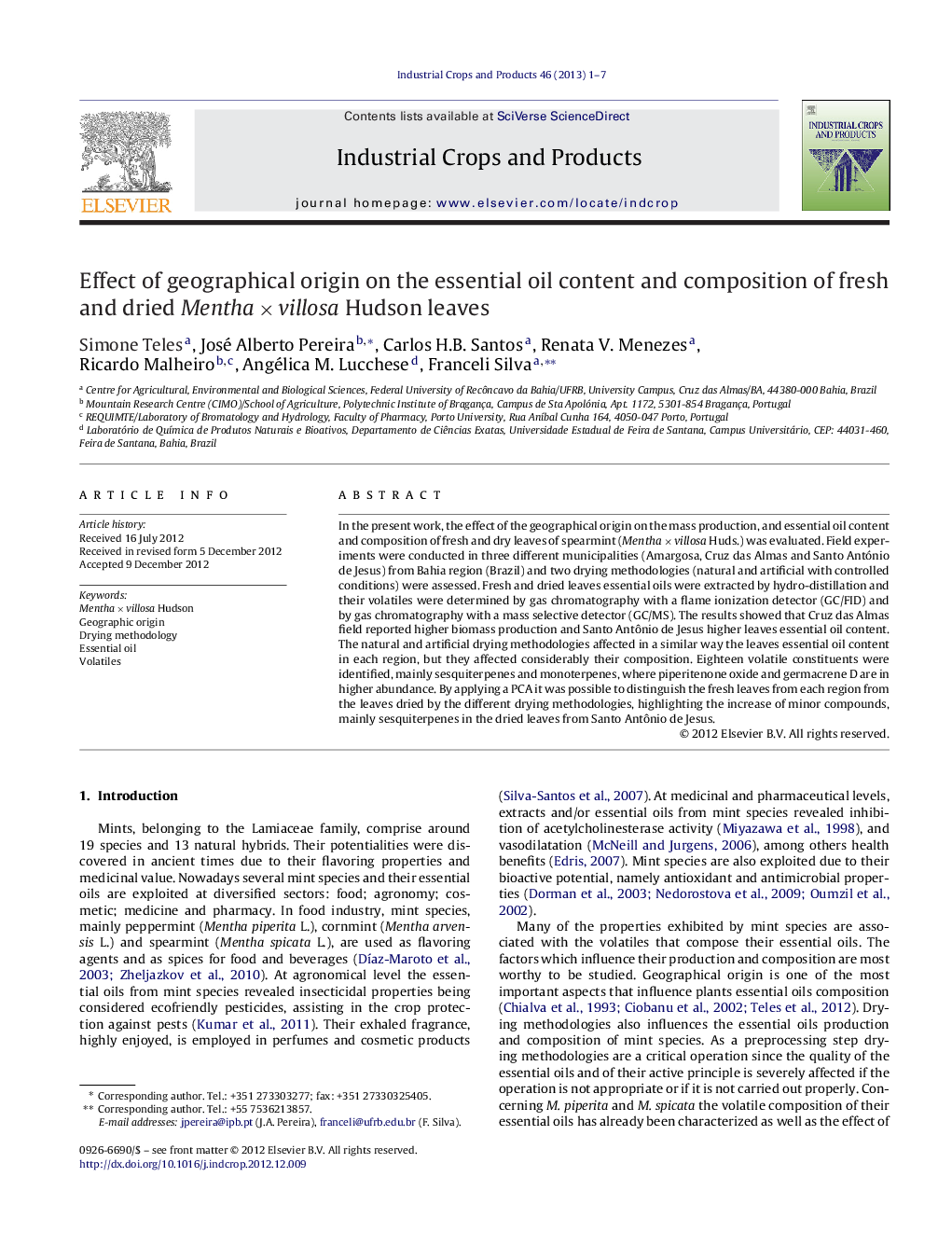| کد مقاله | کد نشریه | سال انتشار | مقاله انگلیسی | نسخه تمام متن |
|---|---|---|---|---|
| 4513821 | 1624863 | 2013 | 7 صفحه PDF | دانلود رایگان |

In the present work, the effect of the geographical origin on the mass production, and essential oil content and composition of fresh and dry leaves of spearmint (Mentha × villosa Huds.) was evaluated. Field experiments were conducted in three different municipalities (Amargosa, Cruz das Almas and Santo António de Jesus) from Bahia region (Brazil) and two drying methodologies (natural and artificial with controlled conditions) were assessed. Fresh and dried leaves essential oils were extracted by hydro-distillation and their volatiles were determined by gas chromatography with a flame ionization detector (GC/FID) and by gas chromatography with a mass selective detector (GC/MS). The results showed that Cruz das Almas field reported higher biomass production and Santo Antônio de Jesus higher leaves essential oil content. The natural and artificial drying methodologies affected in a similar way the leaves essential oil content in each region, but they affected considerably their composition. Eighteen volatile constituents were identified, mainly sesquiterpenes and monoterpenes, where piperitenone oxide and germacrene D are in higher abundance. By applying a PCA it was possible to distinguish the fresh leaves from each region from the leaves dried by the different drying methodologies, highlighting the increase of minor compounds, mainly sesquiterpenes in the dried leaves from Santo Antônio de Jesus.
► Mentha × villosa leaves from different regions and drying methods were assessed.
► Eighteen volatiles, mainly monoterpenes and sesquiterpenes were identified.
► Piperitenone oxide and germacrene D were the most abundant components.
► Natural and artificial drying affected similarly regions essential oil content.
► Geographical origin and drying methodology affected essential oil composition.
Journal: Industrial Crops and Products - Volume 46, April 2013, Pages 1–7